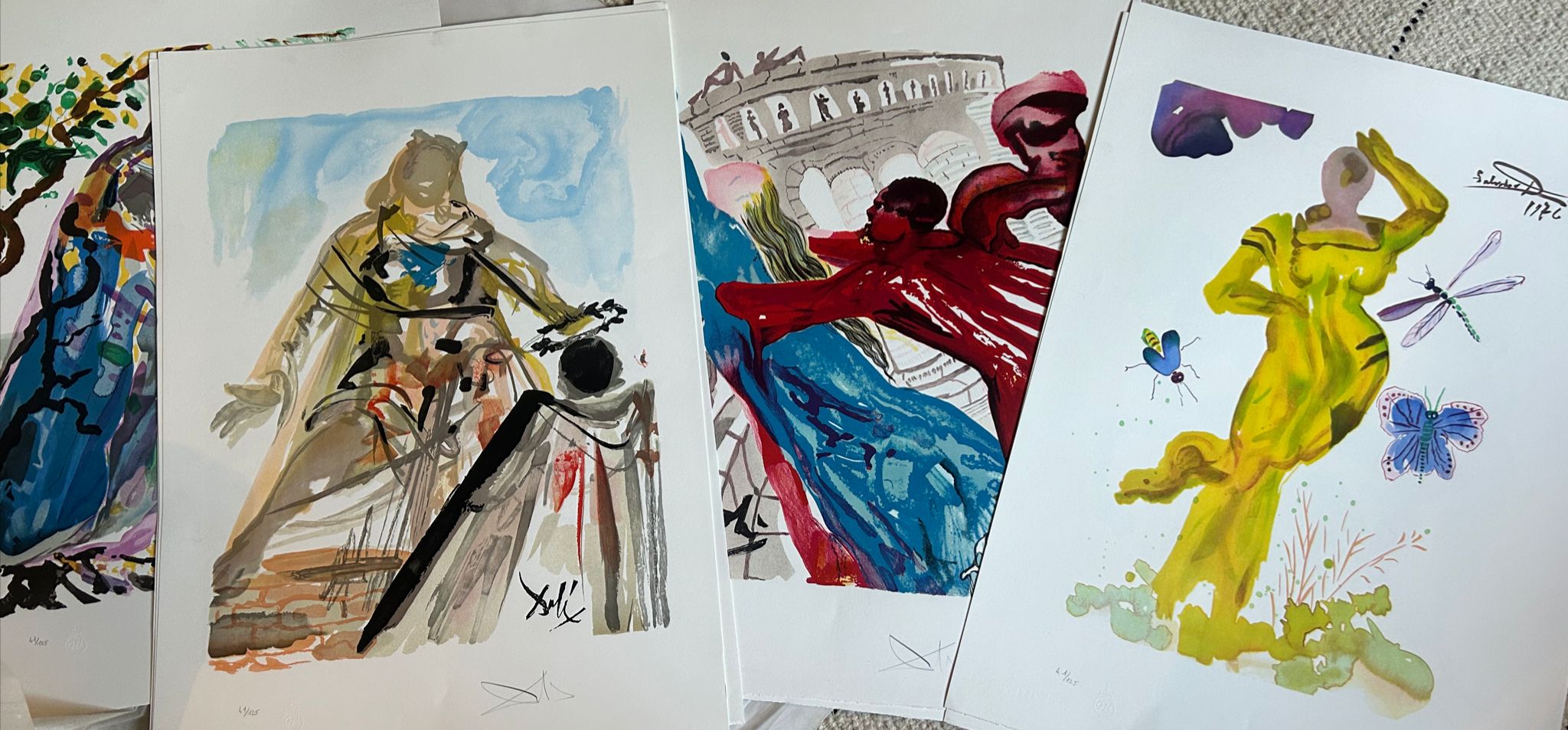
A collection of 10 lithographs by Salvador Dalí and five by French artist Theo Tobiasse are set to head to auction after being discovered in a London garage.
Chris Kirkham, associate director at the Richmond branch of auction house Hansons, was visiting a consignor’s property in Mayfair’s Berkeley Square, a high-end area of central London, when he was invited to inspect artwork outside of the main house.
“It was an amazing find,” Kirkham said. “The vendor took me to his garage, and lo and behold, out came this treasure trove of surrealist lithographs. They’d been tucked away and forgotten about for around 50 years. It felt quite surreal.”
The consignor paid £500 for the unframed lithographs at a London gallery that was going out of business in the late 1970s. (That’s today’s equivalent of about £2,400, or approximately $3,100.) He never got around to framing and hanging the works and rediscovered them while clearing out his home ahead of retirement and a move abroad.
The lithographs will go to the block on September 30 at Hansons Richmond, where the Dalí works are estimated to sell at prices ranging from £300 to £500 ($396 to $659). The pieces by Tobiasse, a painter, engraver, and illustrator, are tagged at £100 to £300 ($132 to $396).
Salvador Dali, The Daughter of Minos (1976). Photo: Hansons Richmond.
The Dalí lithographs come from what would become his 1978 series “L’Art d’Aimer d’Ovide” (Ovid’s Art of Loving), which liberally explored characters from the Latin poet’s work.
In Phoebus, this God Crowned with Laurels, Dalí offers the Greek god of music and poetry bathing in light from a storm cloud. In Divine Erato, the Greek muse is clad in a wash of yellow and accompanied by dragonflies and butterflies. In The Daughter of Minos, he captures Phaedra together with Theseus on a stroll outside a palace.
Printmaking was one of Dalí’s go-to money-making strategies (in addition to starring in advertisements for brands such as Iberia, Nissan, and Wrigley’s). The artist created untold thousands of prints, realizing he could etch an idea onto a metal plate and authorize others to create hundreds of original prints.
A selection of the Dali lithographs set to go to auction. Photo courtesy Hansons Richmond.
Sometimes, he even pre-signed blank sheets of paper to speed up the process. His secretary, John Peter Moore, once claimed that Dalí signed 350,000 blank sheets of paper over the course of his career. The practice is one reason Dalí remains one of the most frequently forged artists.
The auction house has said the lithographs’ colors are particularly fresh since they have been kept in the dark for almost half a century. “Dali and Tobiasse are highly regarded and anything connected to them is sought after,” Kirkham said. “These lithographs provide an inexpensive way to own a signed print.”